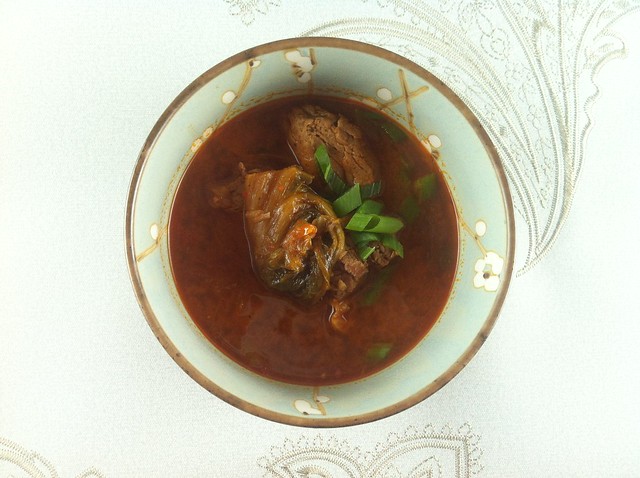People who love to drink while cooking will tell you to cook with the wine you’re drinking. I don’t have a problem with that idea except that I’m usually drinking a really good and expensive bottle to be cooking it. There isn’t a dish good enough that deserves cooked Barolo wine, or in this case, I was drinking a Vouvray. Save the nice wine for you and your loved one and pick up a less expensive white for this.
This sausage and cod stew, I think, is Spanish-inspired even though I still ended up using a different white wine from the Loire Valley. I wanted something hearty but not as thick as a winter dish. I initially planned to do some kind of meatball stew, but the fresh sausages in the supermarket were hard to resist. And when I saw how good the cod steak looked too… well, then.
The chiles here are optional. I used two of the dried Sichuan peppers I brought back from Bhutan, but I gather you can use almost any red chile. It’s really just for a quick kick. It won’t ruin the dish if you decide to skip it. I also used a steak of cod rather than a fillet; that way, it will hold up during cooking and for storing after.
Ingredients:
oil
2 cloves garlic, minced
2 dried red chiles
a handful of fresh basil
3 fresh sausages, sliced in 1-inch pieces
1/2 bottle white wine
4 red potatoes, quartered
1 can of plum tomatoes
1 can of chickpeas, washed, drained
salt and pepper
a handful of green beans, stringed, halved
1 steak of cod, sliced
a handful of parsley, roughly chopped1. Heat some oil in a large Dutch oven over medium heat and sauté the garlic, chiles and basil. Add the sausages and cook until browned.
2. Pour in the white wine and add the potatoes, tomatoes and chickpeas. Season well with salt and pepper and simmer for 20 minutes, until the potatoes are tender and while stirring every couple of minutes.
3. After the soup has simmered, it should have thickened a little, so stir in about 1/2 cup of hot water. Add the green beans and bring everything to a boil to cook the beans. Add the fish and parsley and cook for another 5 minutes. Turn off the heat and let sit, uncovered.




